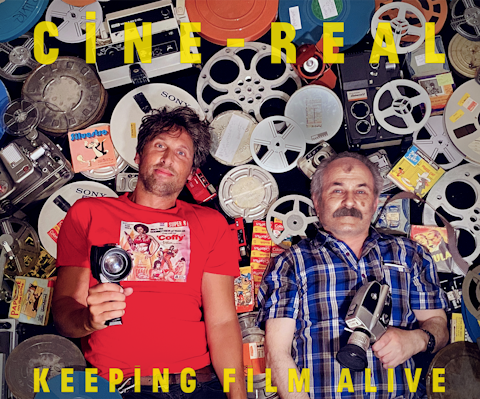Pierrot Le Fou (1965)
Pierrot Le Fou (1965)
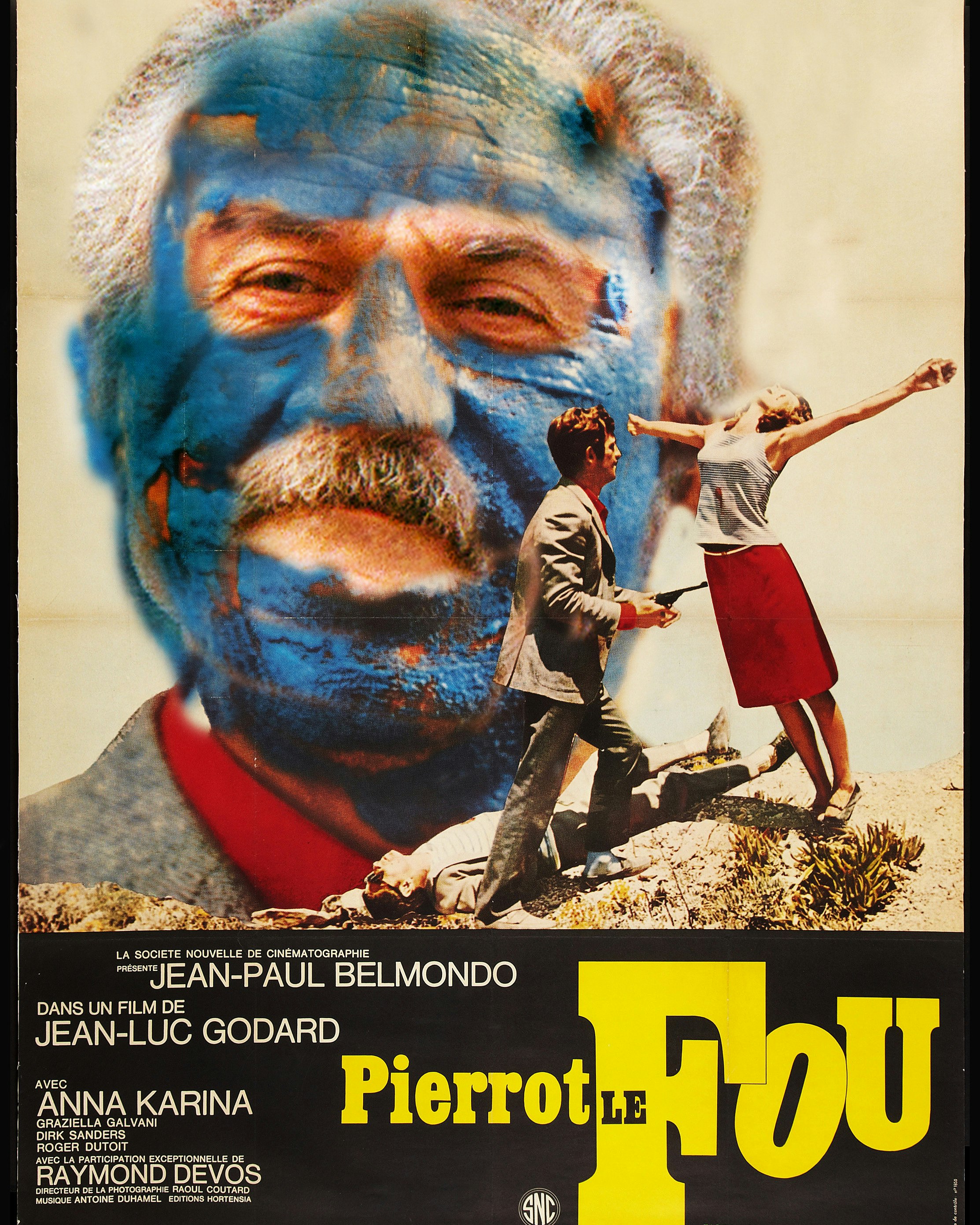
It would be as hard to remake Pierrot le fou as it would be to forget it. Somehow its rueful lovers have to be reconciled to changed times. The film is 44 years old now, which is older than the two central characters whose remains drift away in the sea and the sun. Many things have gone with those two – the Vietnam War, that particular type of sports car, the possibility of an audience that will understand when Ferdinand (Jean-Paul Belmondo) starts to do a Michel Simon imitation. But the last time I looked, the south of France was still there and it was still possible for escaping souls to go south “like spirits through a mirror”. If you drive your car into the ocean on an impulse today, there may spring up the brief arc of rainbow that crowned the spray in the summer of 1965. But is it the same rainbow?
No, you can’t go back: the real Belmondo has had a stroke and Anna Karina perhaps now resembles the Princess Aicha Abadie (who appeared as herself in the film) more than she does Marianne Renoir. But no one makes that kind of fatal summer romance any longer, the one in which a couple break out of arid lives because they have realised they only live once, or because they are tempted to replay Lolita in the Midi – not a little girl and a grown man this time, but a pairing in which he talks to her with words and she looks at him with feelings. (That comes from the film and sounds as plaintive as mid-1960s feminist speak, but it’s not far from the novel Lolita, where Humbert has the achy feelings and the heroine pours her hipster slang into his avid ears.) These days you might do it again as a story about a director and an actress who drift apart while they are making a film called Pierrot le fou.
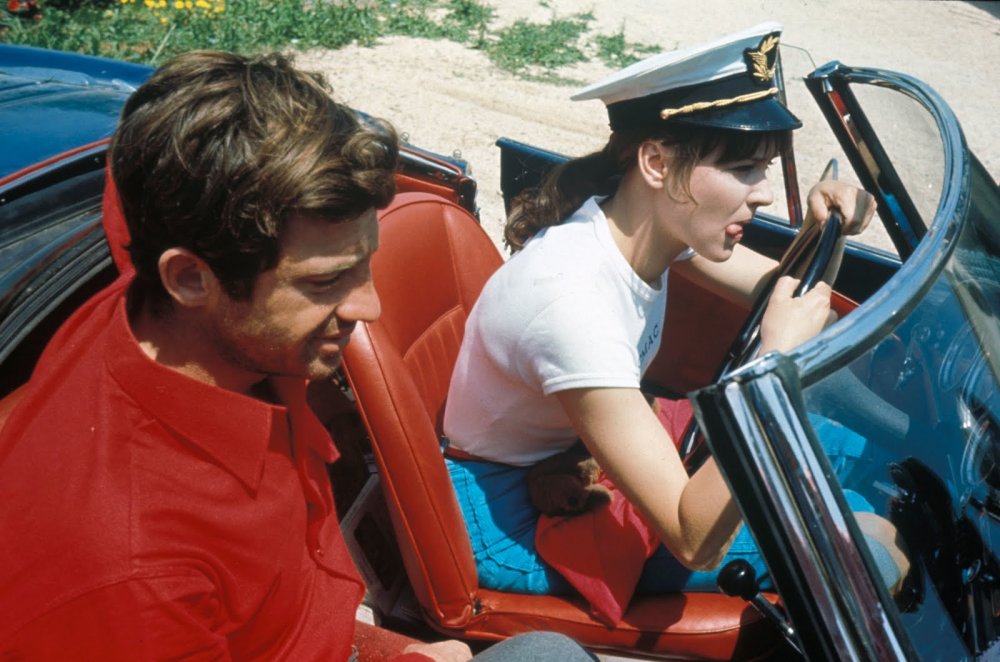
Pierrot le fou (1965)
But wait a minute: as so often, Godard made not just his own film but an autopsy (or analysis) of it at the same time. Godard had acquired Pierrot’s literary source – Lionel White’s American novel Obsession – as early as February 1964. The book concerned the affair between a young woman and a much older man. Godard’s first thought on casting was Richard Burton as the man, and he considered Sylvie Vartan as the girl. When he came to make the film he settled for Belmondo and Karina (only seven years apart in age). Something else had happened in the meantime: Karina had made Le Voleur de Tibidabo with Maurice Ronet. They had an affair, and Godard and Karina were divorced in December 1964.
So Pierrot le fou is an account of the breakdown of a love affair, but it is played out by two people – Karina and Godard – who had already lived the story in reality. So why did they relive their own torture? Well, Godard always said at the time that he did not know how to make a film without Karina – Pierrot was their sixth film together in four years. He added that he was afraid she might not have a career without him. And maybe he, or she, but never quite the two of them at the same time, dreamed of a reconciliation. The obvious comparison is with Welles’s The Lady from Shanghai, an enterprise entered into after the estrangement of Welles and Rita Hayworth, yet playing with the prospect that they might fall in love again if doing it on camera.
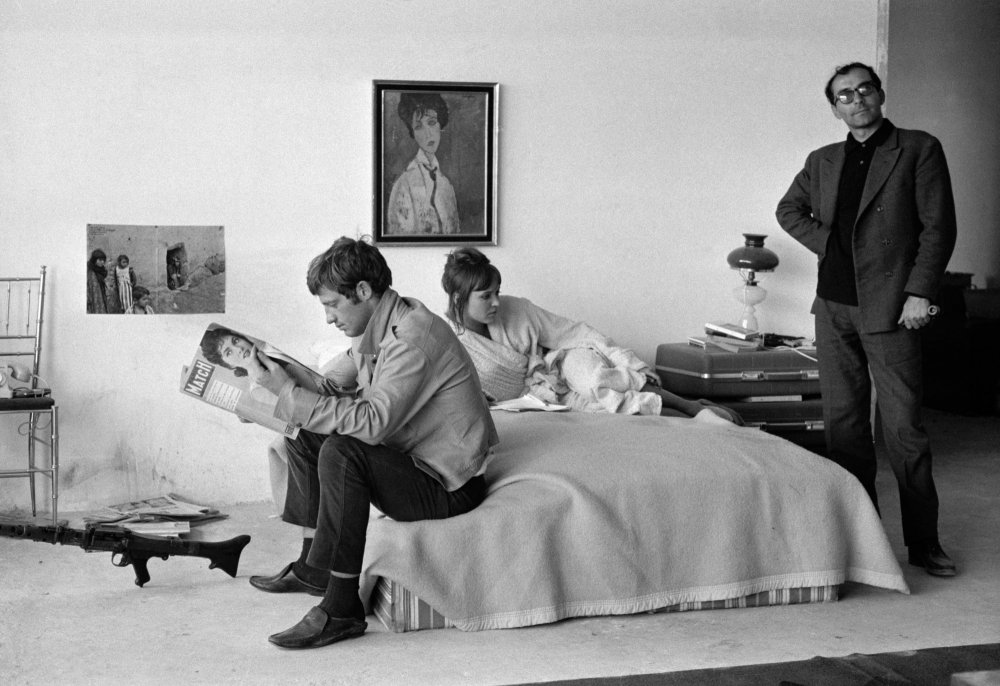
Jean-Paul Belmondo, Anna Karina and Jean-Luc Godard filming Pierrot le fou (1965)
Credit: Corbis
Richard Brody’s account of the film’s making in his excellent book Everything is Cinema: The Working Life of Jean-Luc Godard does not paint a sentimental picture of what happened. The couple could hardly talk to each other, and when they did it was in snarls and groans. Moreover, Karina had to see that the scenario of Pierrot was depicting her as the wanton, betraying figure, the woman who had given up on the austere, lonely Jean-Luc (even Jean-Luc the misogynist). How could she trust the ordinary viewer of the film to see that Godard was a secret enabler in her disloyalty, urging her on by coldness and disdain, and being the complaisant husband who almost directs his wife’s affair – everyone would have had to have seen Le Mépris to get that point.
Perhaps Karina also guessed that just a few murderous, smouldering glances into the camera would establish her point of view. On film, Marianne’s restless desire to do something – to move, dance, sing, kill and pout – is so refreshingly at odds with the self-regarding pose of Ferdinand, who only wants to read and write, eventually filling the Techniscope image with his bleak little poems in red and blue. So the movie goes a long way to undermining the most Godardian qualities: intellect, language, reflection and analysis are constantly put to the test by colour, light, movement, space and the variety of apparently improvised human performances. That encompasses not just Karina’s pacing-tiger act, but the unexpected narrative by Raymond Devos, the lecture on film dynamics by Samuel Fuller, the street theatre Vietnam show, the brief lives of passers-by, and the whole array of quotation and metareference that crowd together in the movie.
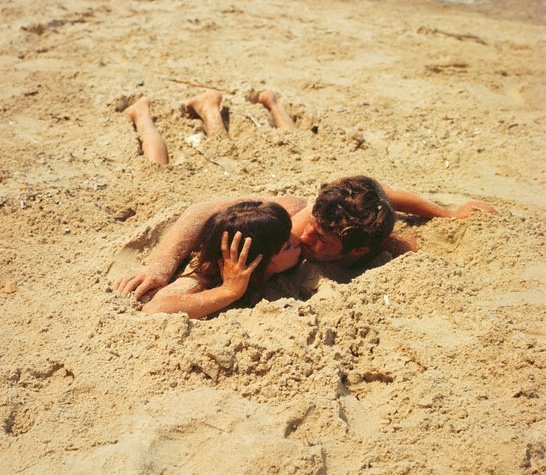
Pierrot always felt like a summer-holiday film, but Brody makes clear that it was the most costly and awkward to shoot that Godard had attempted. The Techniscope system was new and director of photography Raoul Coutard needed a lot of side lighting in interiors to get a balanced image. The schedule was June to July 1965, with the picture opening at the Venice Film Festival on 29 August, but the production was as technically complicated as the emotional situation it sought to exploit was delicate. Still, it was Godard’s ninth feature in six years, continuing his rapid reappraisal of Hollywood genres – which was regarded as a record-breaking pace until Rainer Werner Fassbinder hit his stride in the 1970s.
Just as Ferdinand is a man who can inhale the smoky atmosphere and intrigue of Velázquez (and Johnny Guitar) into his own life, so Pierrot le fou stands clear as one of the New Wave films that addresses the value of cultural reference and so many thousand hours lived in the dark. Belmondo’s Ferdinand has antic passages, but he is a person forever fascinated by a book, a quotation from Céline or a glimpse of Jean Seberg at the movies. (Of course, Seberg was Godard’s first onscreen betrayer in Breathless, where the dying Michel calls her “dégueulasse”.) Whatever Ferdinand does or thinks in the movie he refers to the library – thus a wickedly quick onscreen caper is a collage of Conrad, Stevenson, Jack London, Faulkner and Raymond Chandler. The hero is named Ferdinand after the director’s favourite writer of the moment, Céline, whose Journey to the End of the Night Godard contemplated filming. But Marianne knows how to piss him off by identifying him as the idiot clown – Pierrot. He is too short in life to have another name.
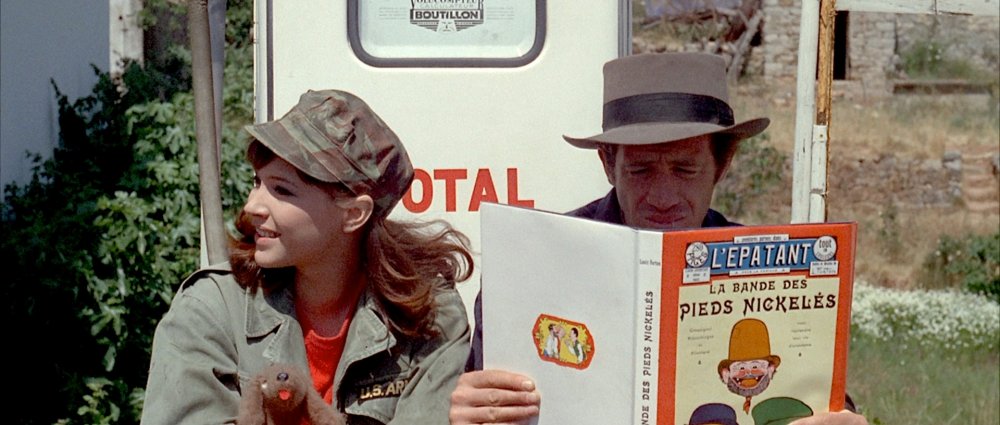
From the nearly crushed music (by Antoine Duhamel), with its heartbreaking plunge into lyricism, to the flaming summer colours by Coutard, Pierrot le fou is a film made out of scorched nostalgia; and don’t be surprised if the burning turns out to be a hint of torture. It is a movie about dismayed dreams, smothered smiles and resentment bubbling up like blood from the wounds. It is also a work of savage contrasts: on the morning after the first lovemaking, the great Bassiak song Jamais je ne t’ai dit que je t’aimerai toujours is cut against the off-hand discovery of a corpse in the next room. Similarly, jokes and tragedy keep stepping on each other’s toes.
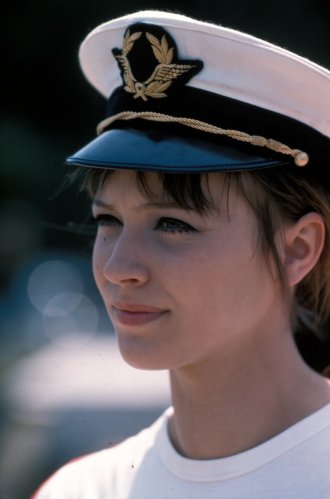
Perhaps Anna Karina sometimes felt that Godard had only put her in this film to humiliate her – because she was his and cheap (the shadow of prostitution is never far away in Godard). But I don’t think anyone has found the film short on the pain present in love. When Welles looks at Rita Hayworth in The Lady from Shanghai, it is an American tourist gaping at a famous but absurd pin-up, but when Godard looks at Karina we feel the ruin and despair at being left. Still, it’s likely that Godard the ironist and analyst only made the film because of that masochistic urge to have an ex-lover stub out her last feeling with every look into his camera.
So I still find it a great film, and a warning signal that romance and romanticism were blood being drained out of the corpse called cinema. It’s as if Godard – one of the greatest readers of the medium we have ever had – foresaw that he could hardly make romantic films again. The process of finding the girl, teaching her to act, of having her in life and on the screen would turn camp after Pierrot. It’s as if he realised that life had worked out in such a way by 1965 that he was trapped at the start of a long downward slope.
Yes of course the rest is ‘interesting’ and valuable. But in the years 1960 to 1965 (very competitive years, let us admit), Godard was without equal at vamping old story forms with the bittersweet tone of the best pop music of the era. To this day, Vivre sa vie and Pierrot le fou find their form, their cutting and their way of seeing in the regret with which a horribly bright, learned noirist is drawn into the plein soleil of summer cinema. This is why Godard always wore dark glasses – against the sun.
